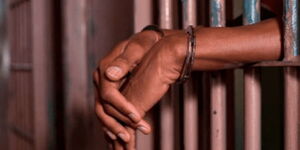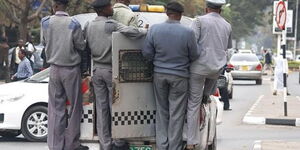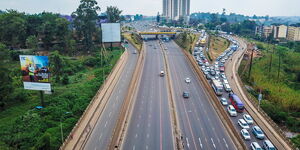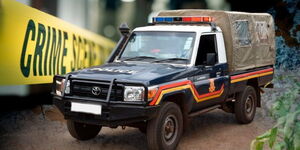The world is currently holding its breath as one of the most lethal diseases to date - coronavirus (COVID-19) - sweeps across the continent.
In Kenya, there have been several scares, with suspected incidences in various parts of the country.
On February 2, two people were quarantined at the Kenyatta National Hospital after they landed at the Jomo Kenyatta International Airport (JKIA) with a high fever.
One of the patients is reported to have come from Beijing via a Kenya Airways flight which he boarded in Dubai while the other arrived on a China Southern Airlines flight.
A few days earlier, a Kenyan student from China was suspected to have been infected with the deadly Coronavirus was admitted at the Coast General Hospital.
The government has since come out to state that there is yet to be a single case of the lethal virus in the country.
“The cabinet ad hoc committee and the various agencies involved are constantly monitoring and evaluating the unfolding situation in Wuhan city, within the country and around the world with a view to making a determination regarding the appropriate response,” the Cabinet Secretary Foreign Affairs Raychelle Omamo declared on February 23.
About the Virus
According to the World Health Organization, Coronaviruses (CoV) are a large family of viruses that cause illness ranging from the common cold to more severe diseases.
The current coronavirus disease (COVID-19) is caused by a virus that the WHO has named severe acute respiratory syndrome coronavirus 2 (SARS-CoV-2). The new strain had not been previously identified in humans.
Coronaviruses are zoonotic, meaning they are transmitted between animals and people, which is believed to be how the first reported human infection in China came to be.
Viruses, and the diseases they cause, often have different names. For example, HIV is the virus that causes AIDS. People often know the name of a disease, such as measles, but not the name of the virus that causes it (rubeola).
Common signs of infection include respiratory symptoms, fever, cough, shortness of breath and breathing difficulties. In more severe cases, the infection can cause pneumonia, severe acute respiratory syndrome, kidney failure, and even death.
The Chinese Center for Disease Control and Prevention has calculated a case fatality rate of about 2% for COVID-19, meaning about 2% of those known to be infected have died.
Why it Matters
According to the latest data provided by WHO, the virus is now present on every continent except Antarctica, with confirmed cases registered in 47 countries according to the latest data, the New York Times reported.
More cases of the virus are now being reported outside China than within it, with Italy the worst-hit country in Europe, having reported a total of 400 cases - a rise of 80 from Tuesday night, February 25, and 12 deaths.
From the Algerian coast to the carnival streets of brazil to the holy cities in Iran, governments are scrambling in a bid to contain the virus.
So far, it has claimed the lives of at least 2,700 people in China, with the majority of the fatal cases witnessed in Hubei province.
The Iraqi government on February 26, banned all outdoor activities: from public gatherings to schools for a period of 10 days after registering its first cases of the virus.
Closer home, Kenyans are in a state of panic after a plane carrying 239 passengers from China jetted into the country.
China Southern Airlines Flight no CZ6043: Changsha to Nairobi taxied into the Jomo Kenyatta International Airport at 0617hrs.
This marked the resumption of flights to Nairobi, Kenya, after a two-week hiatus.
The Ministry of Health has since moved to reassure Kenyans that none of the passengers had exhibited any signs of the virus.
"China Southern Airlines resumed its flights to Nairobi today. All 239 passengers were screened onboard, cleared and advised to self-quarantine for the next 14 days," the Ministry stated in a statement.
However, Kenyans expressed their dissatisfaction over what they referred to as callousness on the part of the government.
A picture of an Uber driver ferrying a Chinese citizen - a popular means of transport across Kenya's capital, Nairobi, went viral.
Citizens took to social media, demanding that the Ministry of Health should do more to secure the country's borders, with many expressing doubts over whether the government was equipped to handle an outbreak of the deadly virus.
With at least 100 Kenyan students stuck in Wuhan, China (the epicenter of the coronavirus Covid-19), many termed it ironic that Chinese citizens could now fly into the country during such a risky period when other countries across the world were barring flights from China.
What to do
According to a report by the WHO, standard recommendations to prevent infection and spread of the virus include:
- Avoiding close contact with anyone showing symptoms of respiratory illness such as coughing and sneezing.
- AvoidIng frequency of closed crowded spaces; - maintain and maintain a distance of at least 1 meter from any individual displaying the COVID-19 symptoms (e.g., coughing, sneezing).
- Performance of frequent hand hygiene. Preferably using alcohol-based hand rubs if hands are not visibly soiled or soap and water when hands are visibly soiled
- If coughing or sneezing, one should cover their nose and mouth with a flexed elbow or paper tissue, and dispose of the tissue immediately after use and perform hand hygiene.
- Avoid touching the mouth and nose
Interestingly, the WHO revealed that a medical mask is not required, as no evidence is available on its usefulness to protect non-sick persons.
However, masks may be worn in some countries according to local cultural habits. Mask users are advised to observe best practices in regards to how to wear, remove, and dispose of them.
Is there a cure?
Peter Marks, the director of the Food and Drug Administration's (FDA) Center for Biologics Evaluation and Research on Wednesday, November 27, claimed that new drugs to treat patients already infected with COVID-19 will emerge much more quickly than vaccines to prevent infection.
He went on to state that Gilead Sciences’ drug (a research-based biopharmaceutical company) remdesivir has shown promise against other coronaviruses, and could prove beneficial in this current outbreak.
A clinical trial to evaluate the safety and effectiveness of remdesivir in adults diagnosed with COVID-19 started at the University of Nebraska Medical Center in Omaha, Nebraska.
The FDA director also revealed that convalescent plasma, a blood product taken from people who have already fallen ill, may have potential.
The FDA’s major job during such an outbreak is to speed the development of diagnostics for detecting the infectious agent, vaccines to prevent people from catching it, and drugs to treat those who fall ill.
However, there are currently no specific medicines approved by the FDA to treat or prevent the disease.












